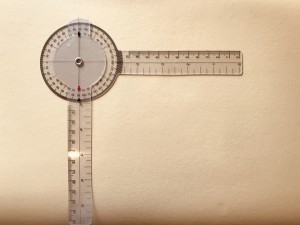 With Children going back to school for a new year now is a great time to think about Ergonomics in schools.
With Children going back to school for a new year now is a great time to think about Ergonomics in schools.
Firstly – Why Ergonomics for schools?
Ergonomics is the science applied to understanding how we interact with our environment. It is used to improve health and productivity – both of which I am sure you would agree are something that we would wish for all school children.
School life and exposures of children has changed over the last 20 years. Increasingly children work on computers through the school day and then use them for home work and play outside of school hours. Children are by default becoming more sedentary due to the increasing use of technologies such as smart phones, personal computers, laptops, ipads and play stations…the list goes on. And the age that this starts seems to be getting younger…
However, by applying some basic ergonomic principles of ensuring that equipment is set up to support the body in a neutral posture and encouraging physical activity can help to avoid some of the foreseeable problems.
Well designed furniture can itself promote better posture but when combined with coaching or regular and frequent reminders can result in significant reduction in the risk of future upper limb and back pain that can both be seen with prolonged computer use.
Why is this important?
You may find it surprising to know that:
- Good posture can have a positive impact on a young person’s capacity to learn by increasing oxygen flow to the brain and blood flow around the body so enhancing concentration and alertness.
- Young people who experience back pain as teenagers are more likely to experience back pain as adults.
- Prolonged stooping or poor posture (notably a ‘C’ shape posture) during the adolescent growth spurt may cause permanent rounding of the back.
- Sitting posture for homework and other activities is really important. Research has shown that children sitting slumped watching television for more than 1 hour can be more at risk of back pain. Add to this time spent sitting at other screen-based leisure pursuits such as computer games etc and the potential for back or posture-related problems increases.
- Sedentary lifestyles and screen-based pursuits of today’s young people sow the seeds for health problems in later teenage and early adult years. Already, increasing numbers of younger teenagers require specialist medical intervention for back pain and upper limb disorders.
Why healthy posture, movement and ergonomics?
Research shows:
- Children spend significantly more time sitting today than they did 20 years ago
- Sitting still does NOT improve concentration – in fact it detracts from it!
- Movement for children is necessary for brain development – “use it or lose it”
- Static sitting stresses the body tissues, resulting in the body becoming more tired, uncomfortable and less productive
- Poor posture, limited movement and non-ergonomic furniture can lead to rounded backs by age 11
Benefits of good habits now…
- More comfortable children
- More attentive and focused pupils
- Better listeners and better learners
Down the line…
- Healthier teenage/adult backs
- Fewer upper limb disorders
- Healthier and more productive employees
What are Good Habits?
Top tip = have an “S” shaped spine when sitting and AVOID a “C” shaped back.
Children should be able to adjust themselves to sit supported, with equipment such as the screen, keyboard and mouse within easy reach so that they can sit with the spine in a gentle S – shape and not slumped into a C – shape. Regular breaks from prolonged sitting help improve circulation helping to reduce fatigue and increase concentration.
If you have any concerns or queries please do not hesitate to contact us.
Computer work is a part of life and IT literacy is an important part of a child’s education – as part of this learning awareness of optimal posture, the benefits of physical activity and learning how to adjust equipment to allow optimal and comfortable posture should be part of this education as well.
Useful links for further information:





